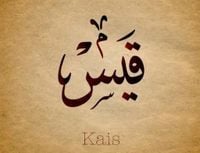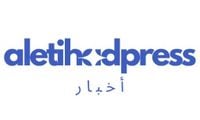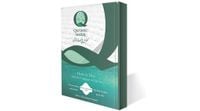In a recent exploration of the Arabic language, philosopher Omar Mirzoj has shed light on its rich characteristics and significance, particularly in the context of Western perceptions. Mirzoj, who specializes in Islamic thought, emphasizes that Arabic is often misunderstood and misrepresented, reducing it to merely a religious language. This oversimplification overlooks the substantial contributions of Arab culture to global civilization.
Mirzoj argues that Arabic is not only a language with deep historical roots but also one that surpasses many others in both linguistic and cultural richness. With over 150 million speakers, Arabic has been recognized as one of the official languages of the United Nations since 1974. Its unique phonetic structure allows for the articulation of virtually all sounds found in other languages, making it a remarkably adaptable tongue.
One of the standout features of Arabic, according to Mirzoj, is its extensive vocabulary. He illustrates this point by discussing the various ways to express the concept of love in Arabic, highlighting terms that convey different shades of emotion. For instance, there are distinct words for passionate love, latent love, and even love that drives one to madness. This lexical precision enables Arabic to articulate complex feelings and ideas with remarkable clarity.
Moreover, Mirzoj notes that the language demonstrates a commitment to purity, resisting foreign loanwords unless absolutely necessary. When borrowing does occur, Arabic quickly assimilates these terms to maintain its linguistic integrity. This ability to absorb and adapt while preserving its identity is a testament to Arabic's strength.
Arabic is fundamentally a root-based language, primarily constructed from three consonantal roots. This morphological structure allows for the derivation of numerous words from a single root, enhancing its flexibility and creativity. For example, from the root “KTB,” which relates to writing, one can form words such as “Kātib” (writer), “Kitāba” (writing), and “Maktūb” (written or fate). Such a system not only enriches the language but also facilitates the introduction of new concepts and realities.
Mirzoj also highlights Arabic's succinctness, which favors clear and effective expression. Unlike French, which often avoids repetition, Arabic utilizes coordinated phrases that enhance its clarity and directionality. This conciseness contributes to Arabic's reputation as a powerful and expressive language.
Additionally, Arabic is described as a language that seeks to convey tangible realities. For example, while a French speaker might say, "We hear cries of joy," an Arabic speaker would articulate, "I hear people emitting cries of joy," creating a more vivid and immersive expression.
Mirzoj points to the influence of Arabic on other languages, particularly French, which has adopted over 250 words of Arabic origin, including terms like "coffee," "rice," "sugar," "kohl," and "fashion." This linguistic exchange underscores Arabic's historical and cultural significance.
In conclusion, Mirzoj advocates for greater recognition of the Arabic language, which he believes deserves to be studied and appreciated in its own right. He insists that Arabic is more than just a religious language; it is a rich, precise, and influential language that has played a crucial role in human history. By rediscovering its qualities, one can better appreciate its contribution to global civilization.
In a related development, Nasser Muhammad Islam, a lecturer at New York University Abu Dhabi, and Dr. Khaled Shahu, a professor of Arabic and Islamic studies at Ma'had Taysir, have co-authored a bilingual book titled "The Language of the Quran." This resource aims to bridge the gap for learners seeking to engage with the language of the Holy Quran.
Published on April 1, 2025, the book provides an immersive educational experience for beginners and intermediate learners, focusing on the Quranic language's fundamentals while integrating its cultural and religious contexts. By emphasizing Quranic vocabulary and principles, the book equips students with a strong foundation for understanding the language of the Quran.
Through a series of progressive exercises, the book develops skills in reading, writing, speaking, and comprehension, while also incorporating Quranic recitation and Arabic calligraphy to deepen students' connection to the text and its traditions. The authors have designed the book to relate Quranic Arabic to everyday language, adopting a communicative approach that builds practical language skills within the framework of Quranic vocabulary and Islamic culture.
"The Language of the Quran" combines modern teaching methods with authentic Quranic content, presenting vocabulary and contextual examples tailored for today's students aged 14 and above. Nasser Islam expressed that the book offers Arabic students a meaningful way to engage with the language of the Quran, stating, "We believe it provides a unique opportunity to explore the language while focusing on its cultural and spiritual heritage, fostering a deeper connection with the Holy Quran."
The book also includes quick response codes and answer keys for teachers, serving as a valuable resource for anyone seeking to understand the Quranic language and its cultural significance. It brings new insights into understanding the Quranic language as the language of the Arabs prior to the Quran's revelation, emphasizing that the Quran's language remains rooted in Arabic vocabulary and grammatical structures.
Ultimately, both Mirzoj's insights and the new educational resource highlight the importance of the Arabic language and its profound impact on culture, identity, and history.






